|
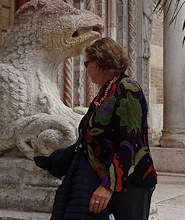 Dwight Peck's personal website Dwight Peck's personal website
Sirmione and the neighborhood, May 2016
Ten days in the home of the Scaligeri and the heretics
You may not find this terribly rewarding unless you're included here, so this is a good time for casual and random browsers to turn back before they get too caught up in the sweep and majesty of the proceedings and can't let go.
Verona (3): the Duomo and San Zeno
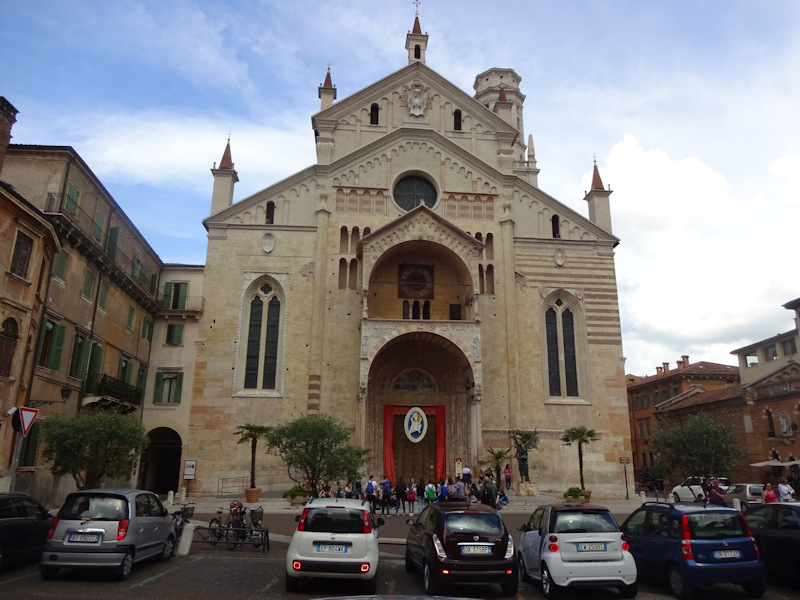
The Romanesque Cattedrale Santa Maria Matricolare, or Duomo di Verona, was built in the 12th century to replace two older churches (one of which was supposedly consecrated by St Zeno in 380) that were destroyed in the earthquake of 1117, and was consecrated in 1187. The two-story porch, by the sculptor Nicholaus (Nicolò), dates from the same time, but the Gothic windows on either side of the porch were added as part of a mid-14th century renovation.
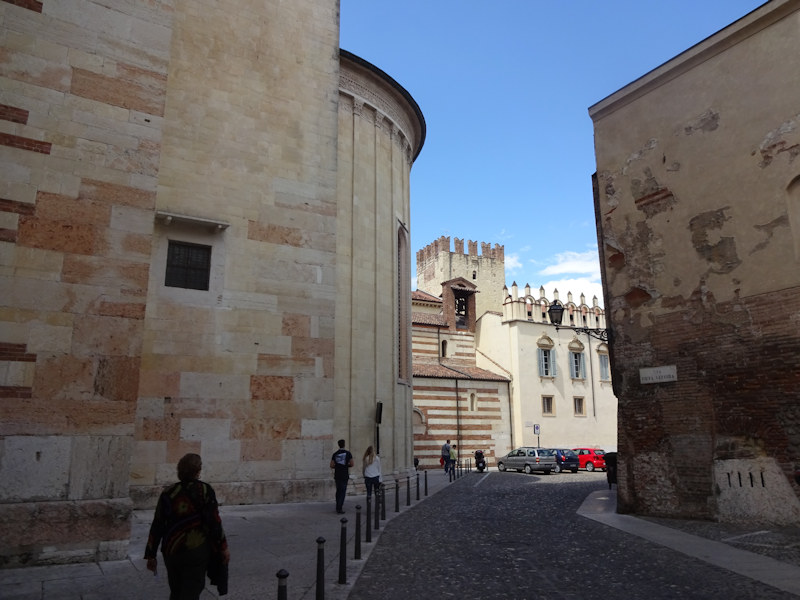
We'll begin our visit round the back, past the belltower on the left and the apse

The Bishop's Palace or Palazzo del Vescovado. The river loops around the city just beyond those trees, near the Ponte Pietra, built in 100 BC to carry the Via Postumia into the city (destroyed by retreating Germans in 1945 and restored with the same materials in 1957), and the 1st century BC Roman theatre on the farther bank.

The Baptistery of San Giovanni in Fonte, round the back in one of the semi-attached buildings that make up the cathedral complex.
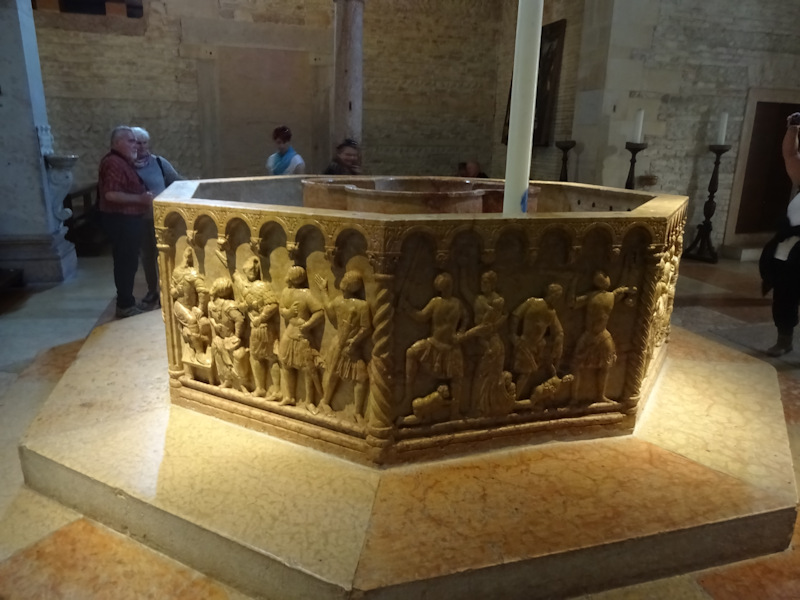
The Baptistery building dates from 1123, but the amazing Romanesque font, made from a single piece of marble, was created by the 13th century "Master Brioloto" of Verona, best known for his "Wheel of Fortune" rose window on the Basilica of San Zeno across town.

Eight scenes from the early years of the life of Christ

Inside the Duomo, comprising a classic nave with two aisles, with arches supported by columns of red Verona marble. Most of the interior dates from the 15th century renovations. The presbytery is more or less walled off by a marble screen for some reason . . .
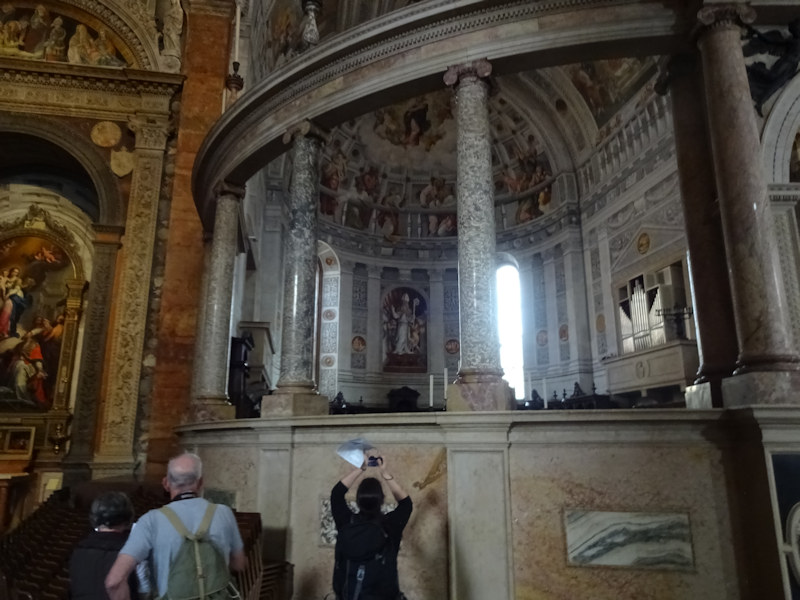
. . . but you can still get a photo of the pictures in the apse.
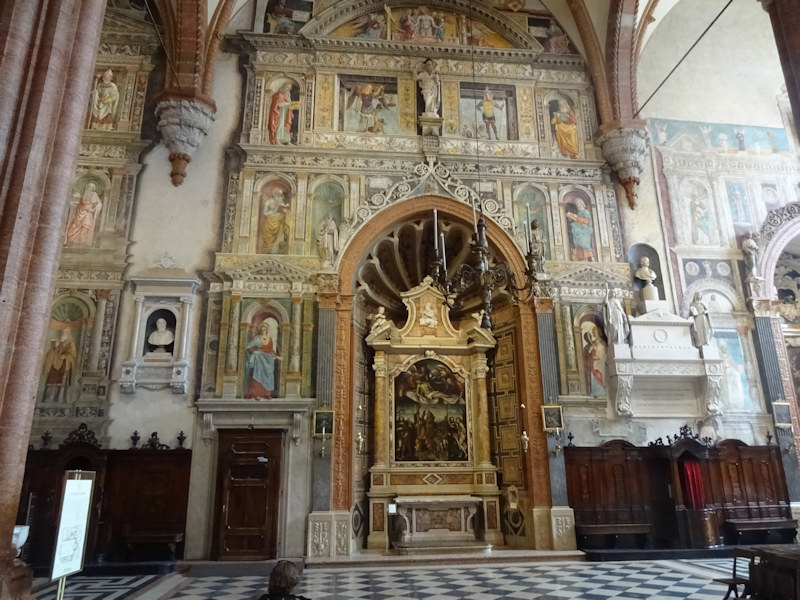
Chapels all around the nave were added in the 16th century; all of them are set off by trompe l'oeil frescoes suggesting statues in niches.
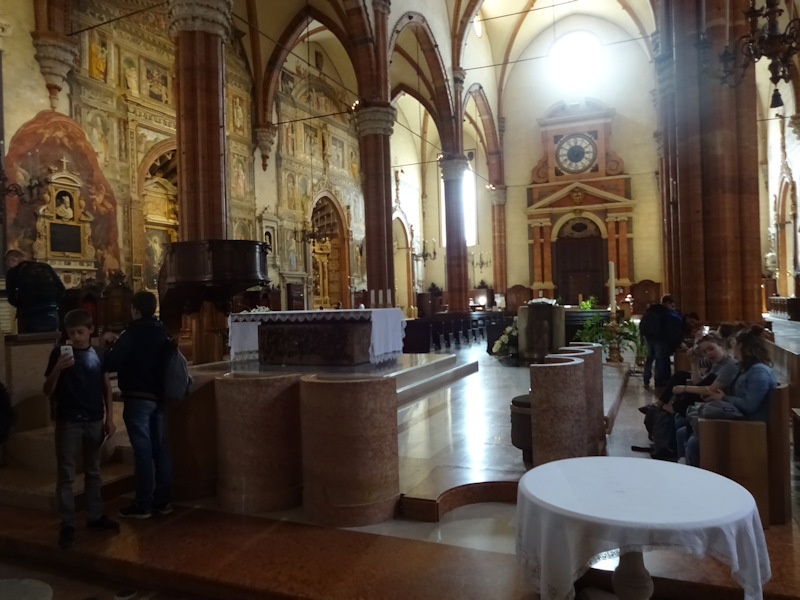
The Assumption of the Virgin, by Titian in 1535
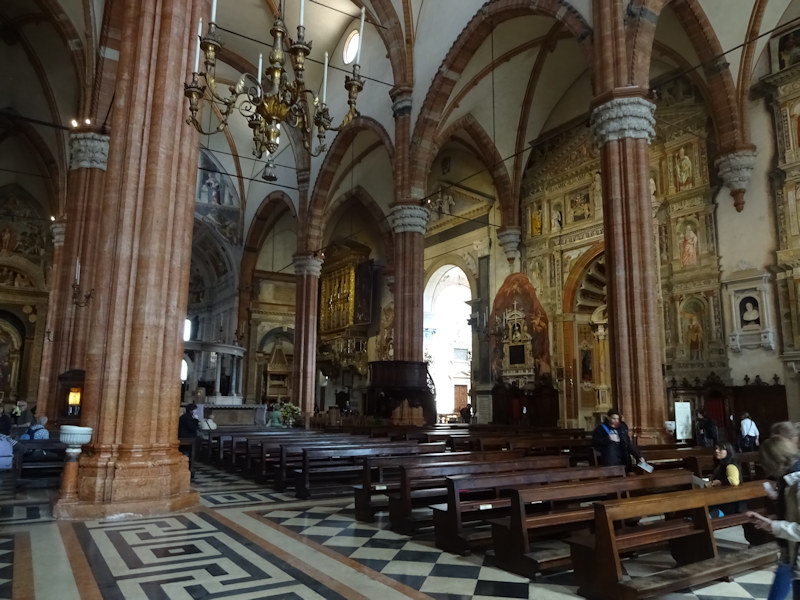
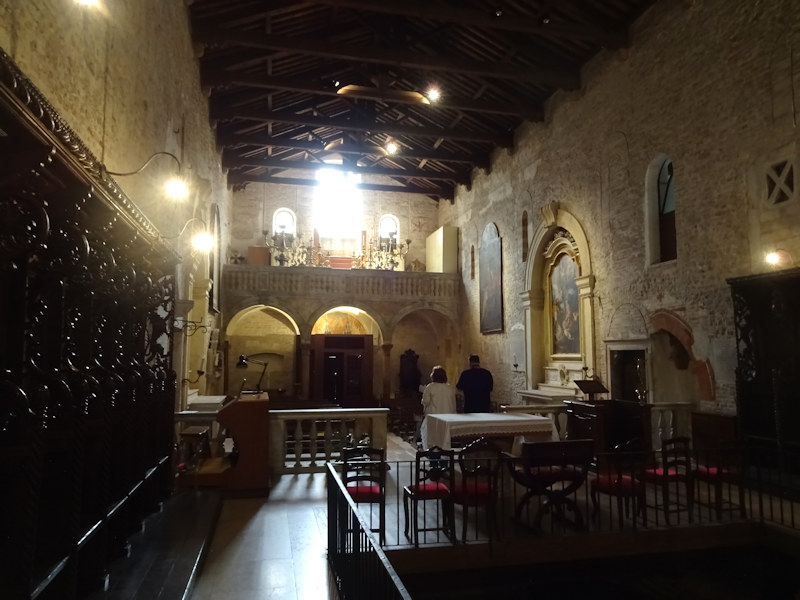
The semi-detached Church of St Helena, begun in the 9th century over the remains of 4th-5th century basilicas; beneath the railings lie . . .
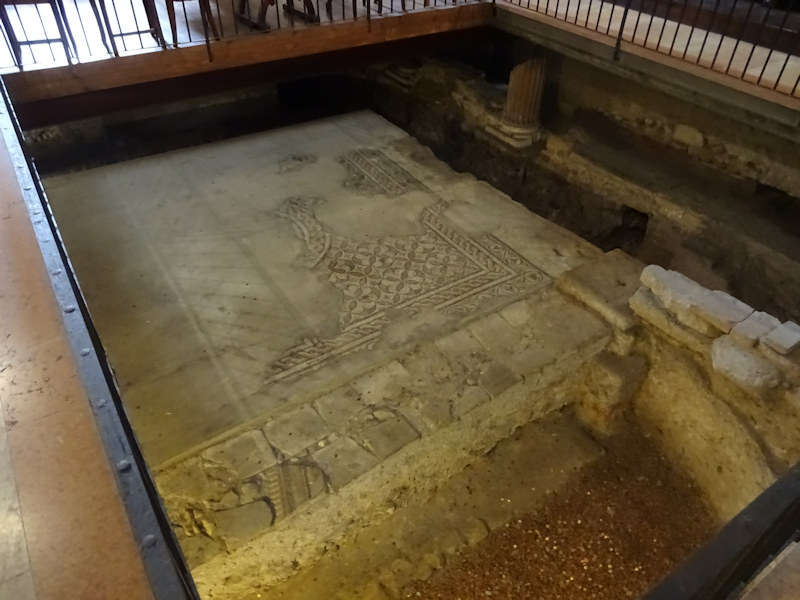
. . . mosaics from the 4th century basilica on the site. The church was dedicated to Saints George and Zeno but later named for Constantine the Great's mother the Empress Helena, who discovered the True Cross in the Holy Land and presented a reliquary with presumably bits of the Cross to the church here.
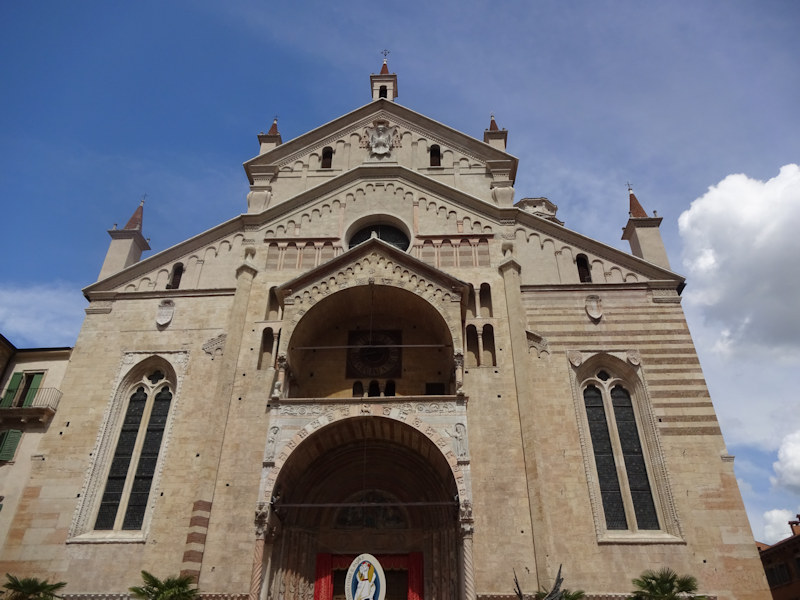
The façade of the Duomo
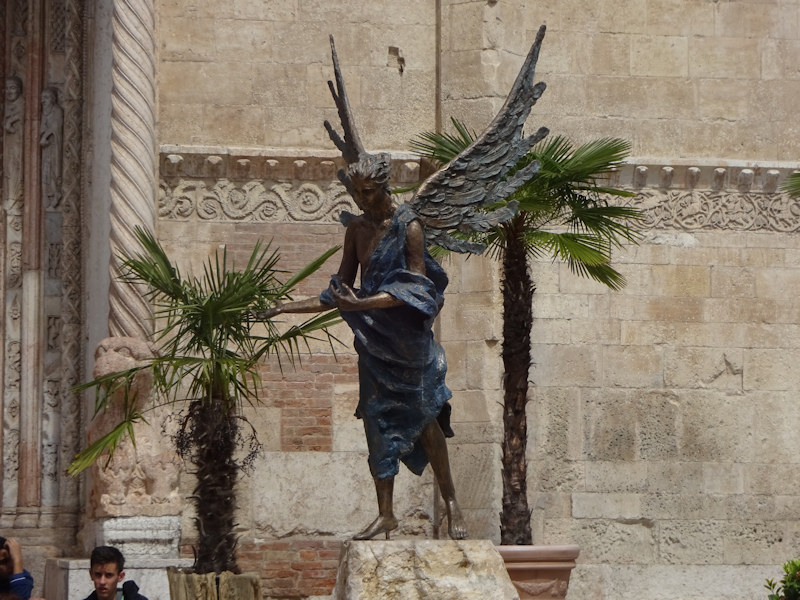
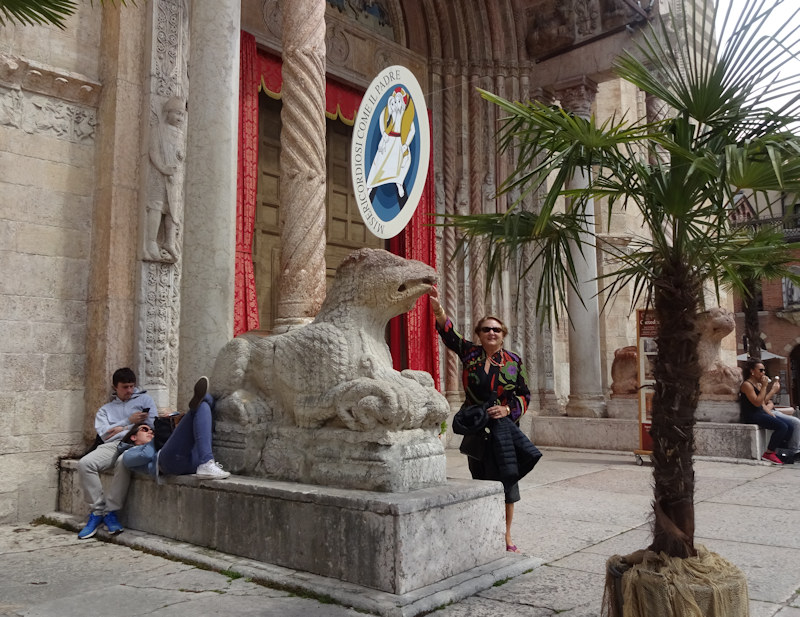
Continuing our long tradition of photographing Kristin's hand in the (frequently Venetian) lion's mouth

Back downtown

And back to the Piazza delle Erbe, and an ice cream pitstop for the school groups
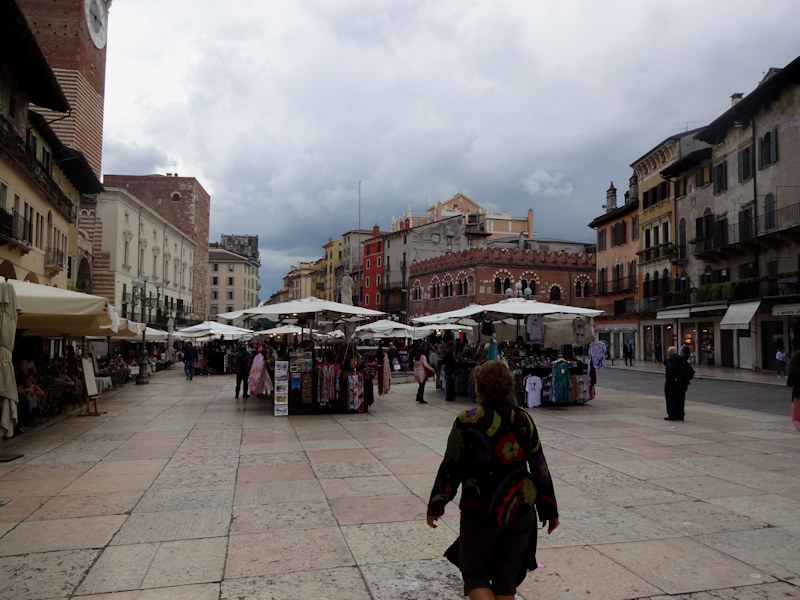
Traversing the Piazza delle Erbe again
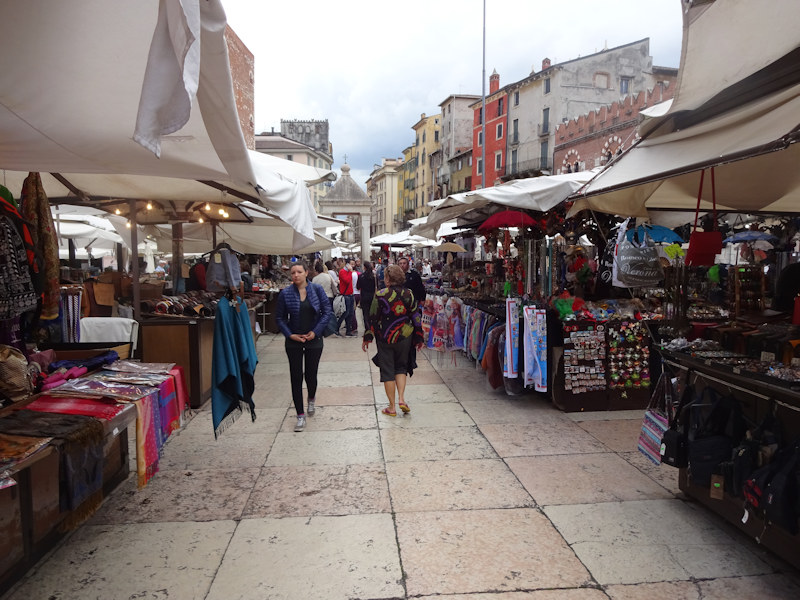
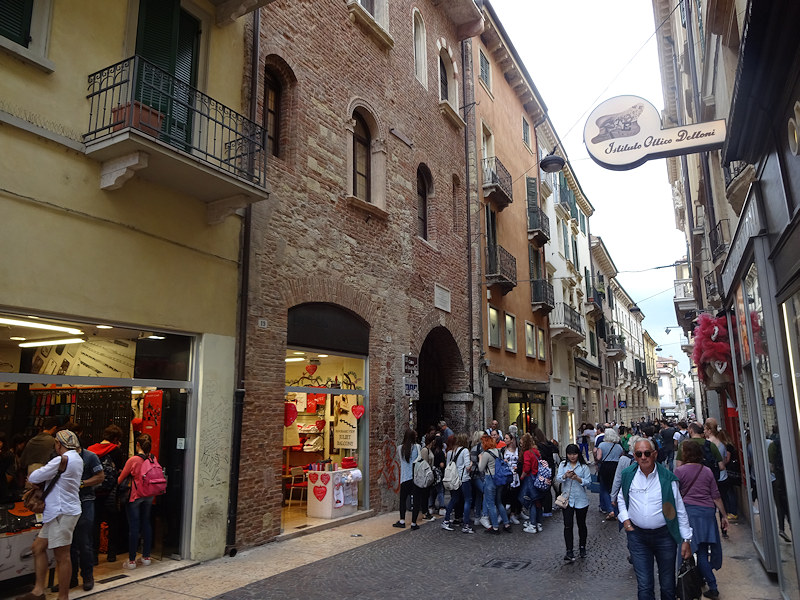
Apart from the Arena, here's the Must See attraction of Verona, if we can work our way through the throngs of pilgrims . . .

There it is, Juliet Capulet's own balcony (and museum), with, perhaps . . . no, that must just be a fee-paying tourist. The lady on the lower left is rubbing the bronze breast of the statue of Juliet, which is supposed to turn your love life around, assuming that that would be a good thing. The original statue, dating all the way back to 1972, had to be removed in 2014, due to damage from too much breast-rubbing, and was replaced by this copy.
In the first episode of Francesco da Mosto's BBC 2 series, "Francesco's Italy: Top to Toe" (2006), Francesco performs a duet with an opera singer above him on the balcony.
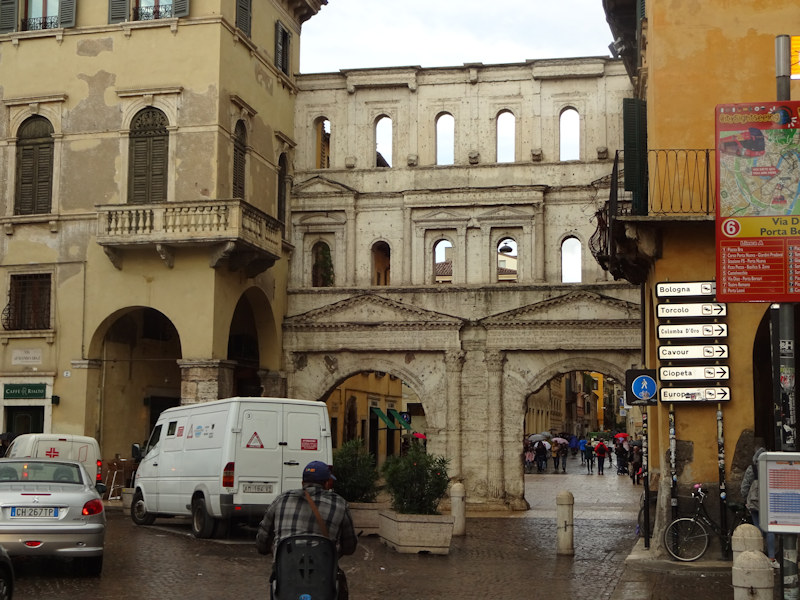
This is the famous Porta Borsari, built in the 1st century AD to replace an earlier one -- in Roman times the Via Postumia entered the city from this side and became the city's main street, the decumanus maximus, now leading to the former Forum area, later the Piazza delle Erbe. Originally called the Porta Iovia, from a nearby temple of Jupiter, the present name derives from the medieval customs officers, or bursars, who collected taxes from merchants passing through it.
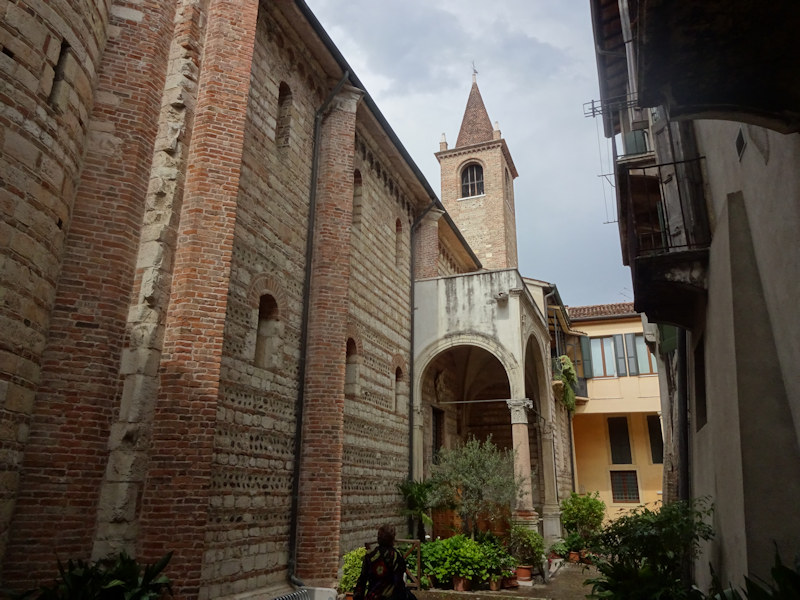
Farther along the Corso Cavour, this is the Romanesque Church of San Lorenzo, built after the 1117 earthquake to replace a 6th century original.
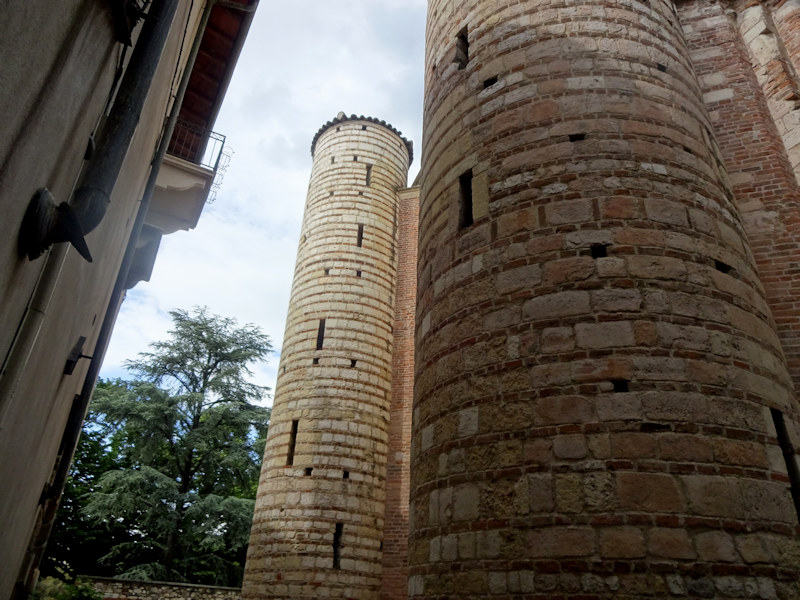
The façade, facing into this tiny alley, lies between two Norman-style towers which apparently contain spiral staircases winding up to the women's galleries (matronea) overlooking the nave and altar.
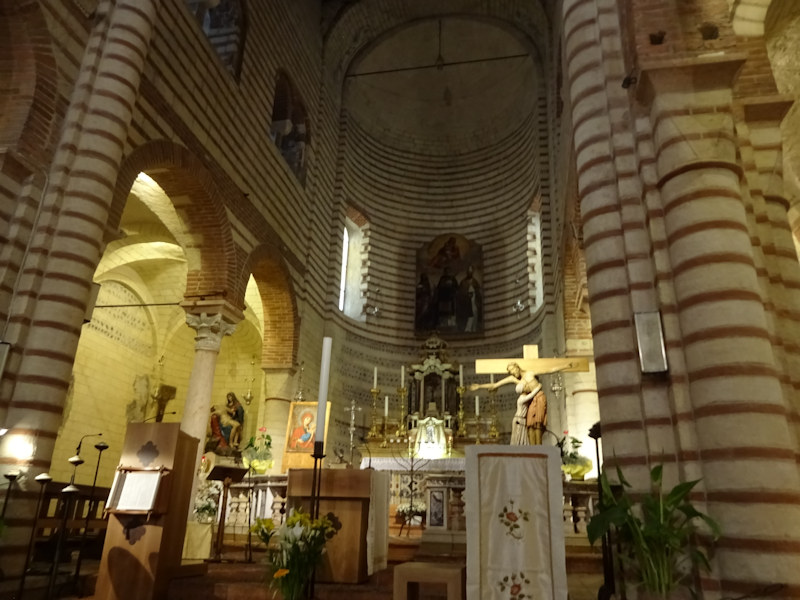
A narrow nave with alternating layers of sandstone and brick
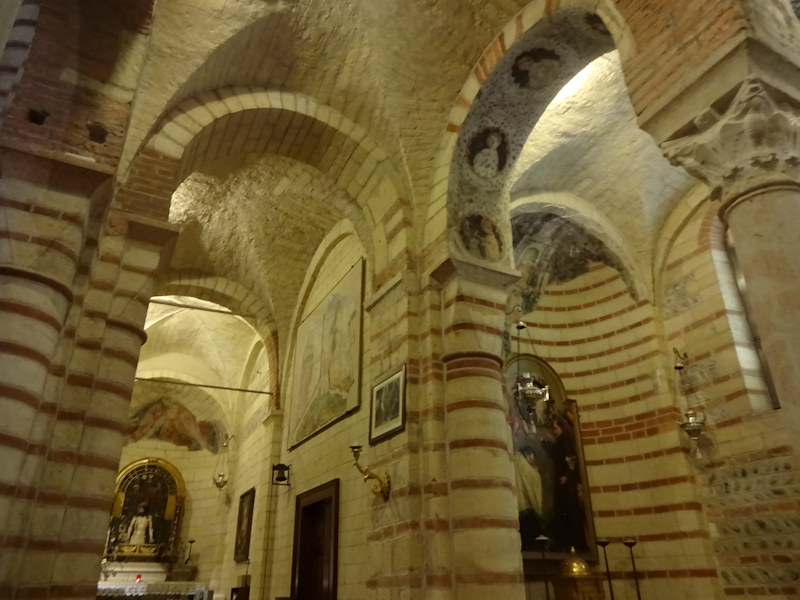
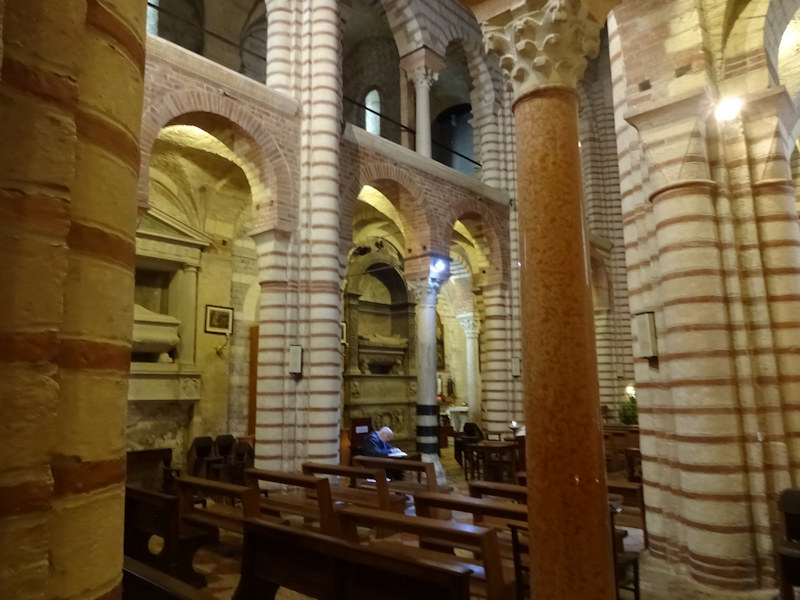
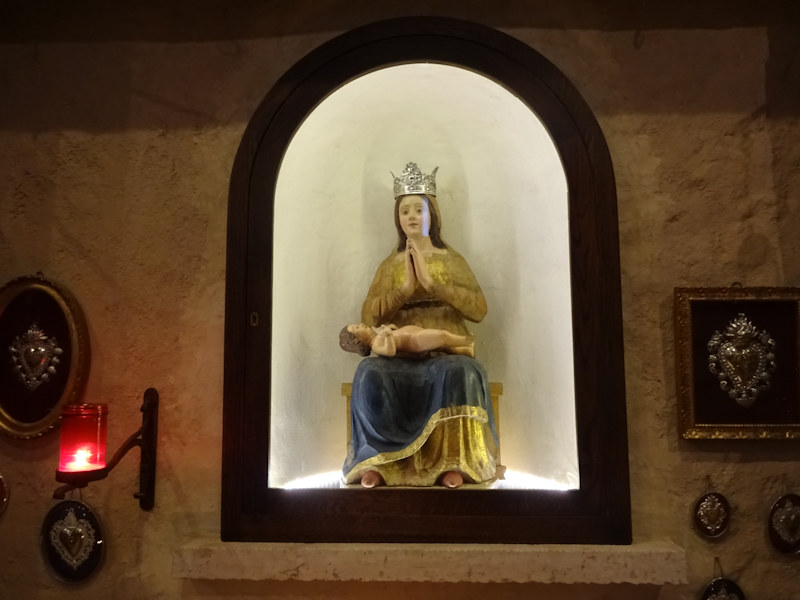
Unconvincing

No little Dotto tourist road-train for Verona
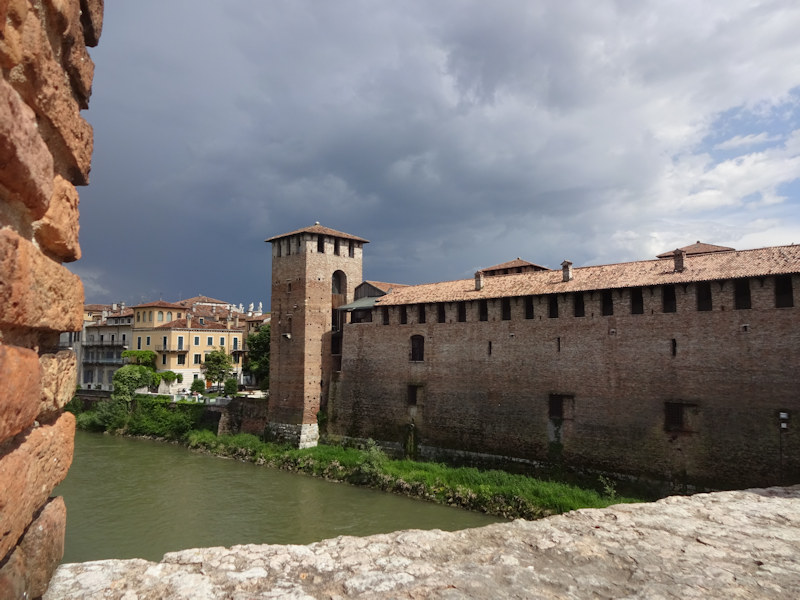
The Castelvecchio seen from the far side of the Ponte di Castelvecchio
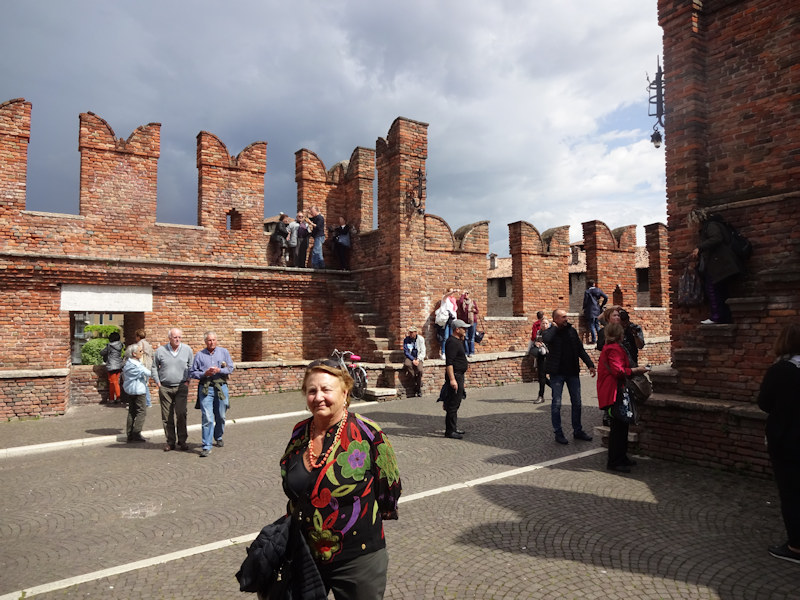
On the reconstructed Scaliger-era bridge

The Castelvecchio bridge from upstream

Turning inland at the Piazzetta Portichetti

An ATM with attitude
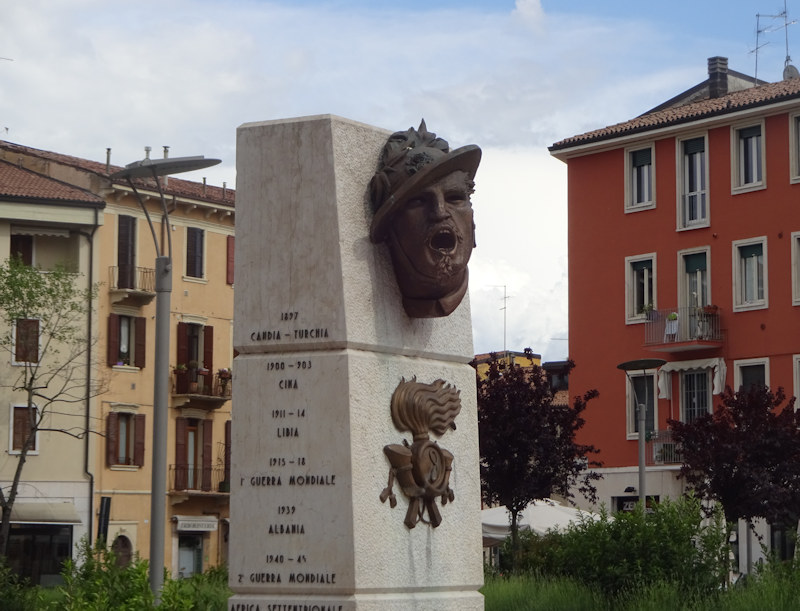
-- Who you gonna call?!
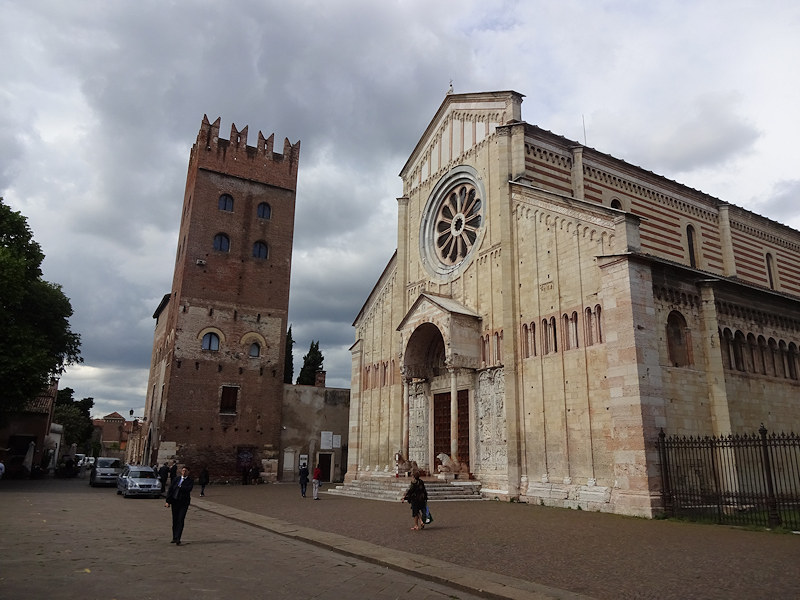
The grand disappointment of our visit: the Romanesque Basilica di San Zeno Maggiore, built 1123-1135 over a 4th century church dedicated to San Zeno, Verona's patron saint.

Zeno is said to have been a miracle-working early Bishop of Verona, who died in about 380; he may have come from Mauretania (Morocco) and is often depicted as dark-skinned. Pope Gregory the Great described him as a martyr, but martyrdom is not generally part of his story. He was particularly good at demon-chasing, however, perhaps because as a baby he was briefly exchanged for a demon changeling. St Ambrose of Milan, his contemporary, described him as especially holy. He's beloved of fishermen, because he did his own fishing for his dinner, and he's usually depicted with fish hanging off his crozier, but some people think that that's really a reference to his success at converting and baptizing Arian heretics. Pope Gregory credits Zeno with saving his church from a disastrous flood in Verona in 588 by appearing at just the right time, and says that the Lombard Queen Theodelinda could testify to that as an eyewitness.

The basilica and associated Benedictine monastery were begun in the early 9th century, but were badly damaged by Magyar raids in the 10th; a new Romanesque church was built in the late 10th century, but destroyed in the earthquake of 1117. Restorations and enlargements began in 1138 and were completed by 1398. The rose window (called the "Wheel of Fortune" for the six figures ringing the window that illustrate different human conditions) is by Brioloto, the fellow who made the marble font in the Baptistery of San Giovanni seen above.
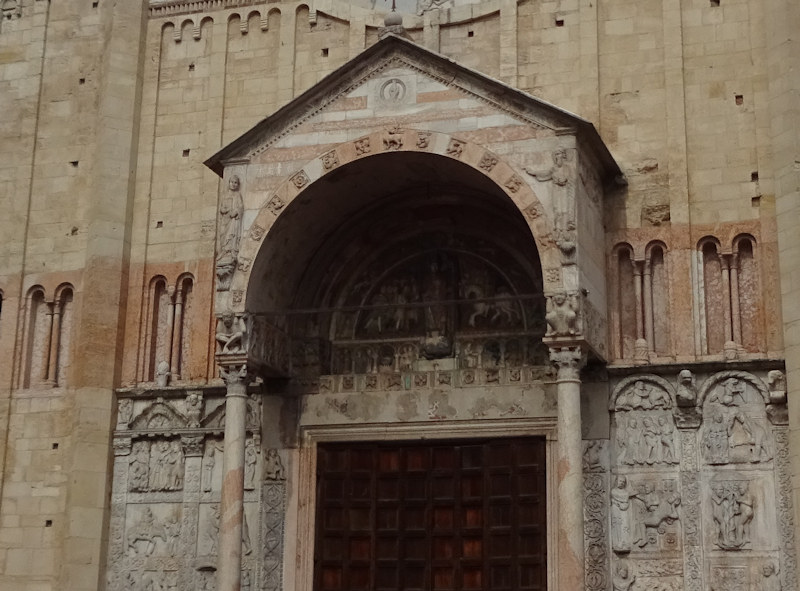
The lunette above the door shows scenes from Veronese history, including (on the right side) what some historians consider to be the first graphic representation of the installation of a civic podestà (J. K. Hyde, Society and politics in medieval Italy: the evolution of the civil life 1000-1350).
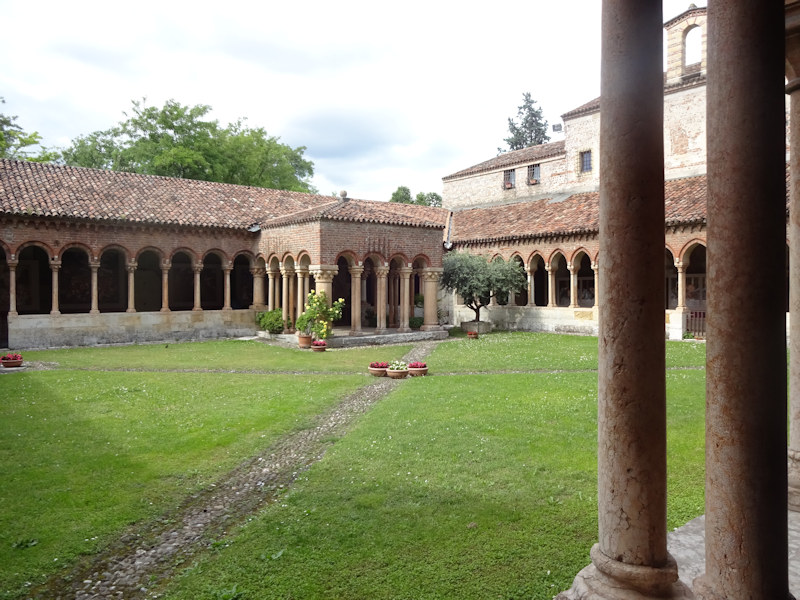
The 13th-14th century cloister of the Benedictine Abbey of San Zeno, nearly all that remains of a very rich 8th century abbey that was capable of hosting the Emperor Frederick II and his huge entourage in the mid-13th century. The sepulchre houses the abbot Giuseppe della Scala, abbot from 1291-1314, "depraved and deformed" according to Dante in the Purgatorio.

The cloister, basilica, and belltower. Most of the abbey was knocked down by Venetian and Napoleonic suppressors of religious properties.
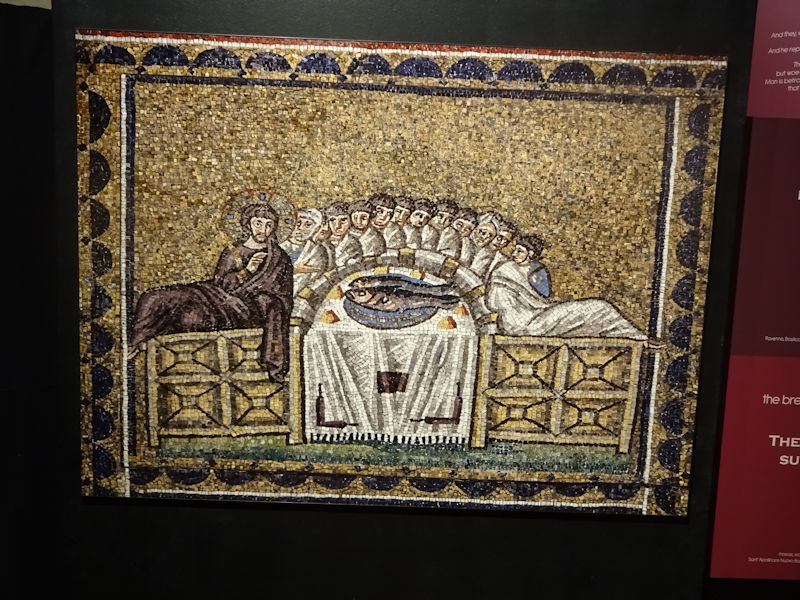
The Last Supper, an anonymous mosaic, eary 6th century, from the Sant'Apolinaire Nuovo Basilica in Ravenna, said here to be 'among the very first representations of this biblical passage'.

One of those strange Jesus-as-the-root-of-all-holiness vine paintings -- a copy of the Christ-Vine picture by Lorenzo Lotto. The scenes along the bottom are all devoted to gruesome torture scenes involving female martyrs.
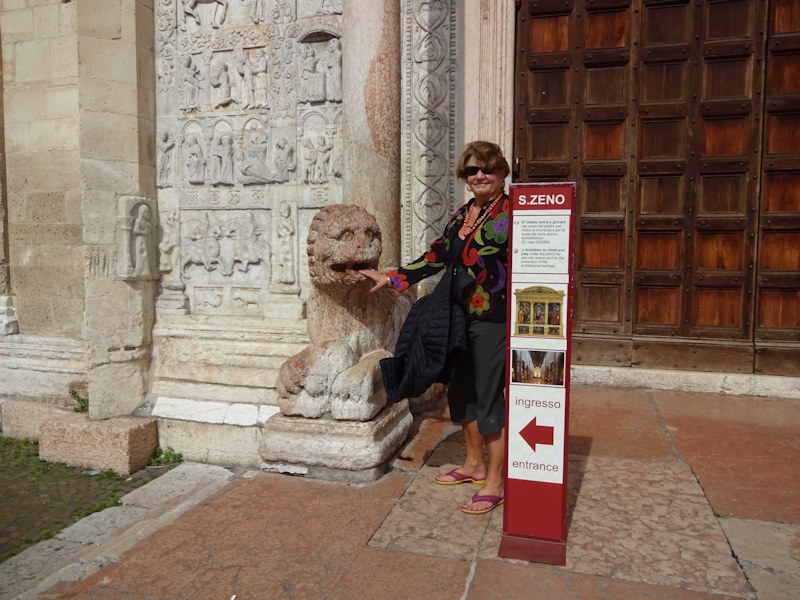
Kristin and one of the (non-Venetian) lions

The basilica is famous for the 11th to 13th century bronze panels of Old and New Testament scenes.
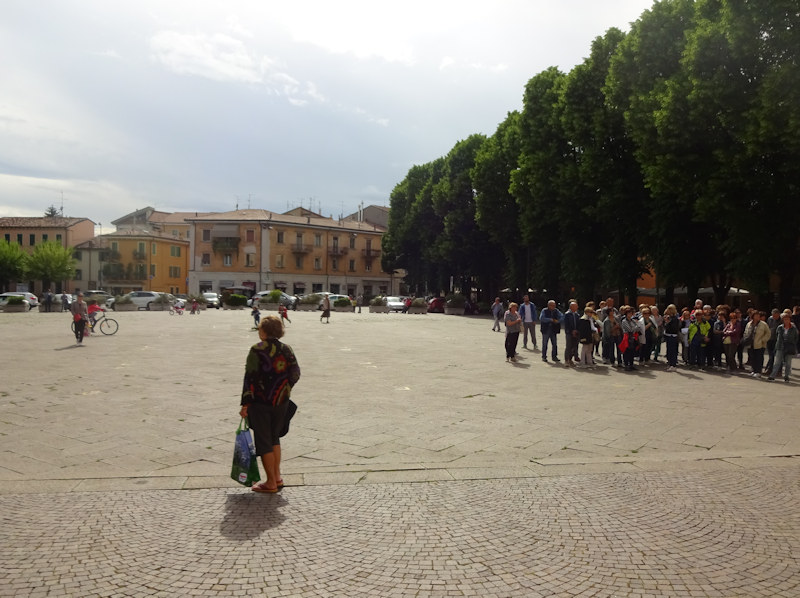
And that is ALL we're going to see of San Zeno on this trip. Our thoughts and prayers go out to the worthy gentleman who's tragically died and to his family who've rented out the entire basilica for his funeral, scheduled to continue for another hour and a half. We didn't even get to see San Zeno in his sarcophagus, with his silver mask on, or the Mantegna altarpiece.
Sirmione again
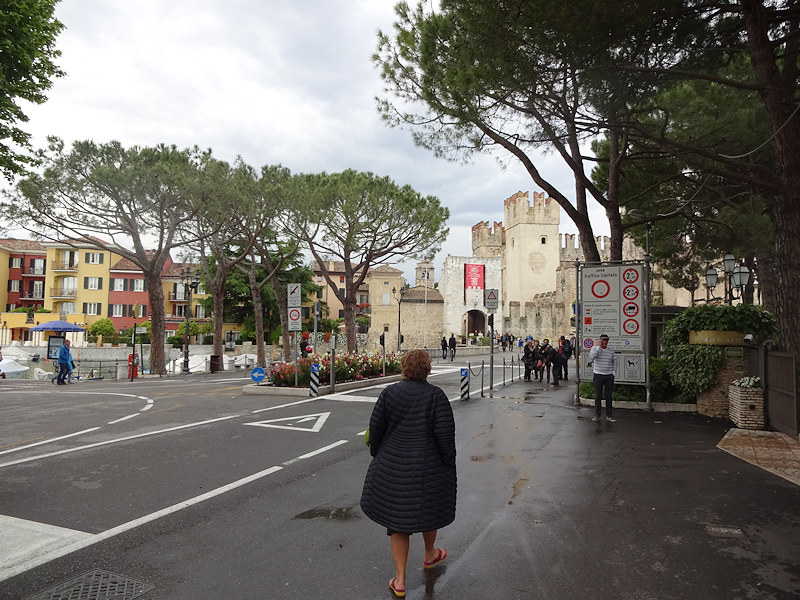
That's all we've had time for today. We're back to Sirmione, headed into town.


To the hotel Grifone
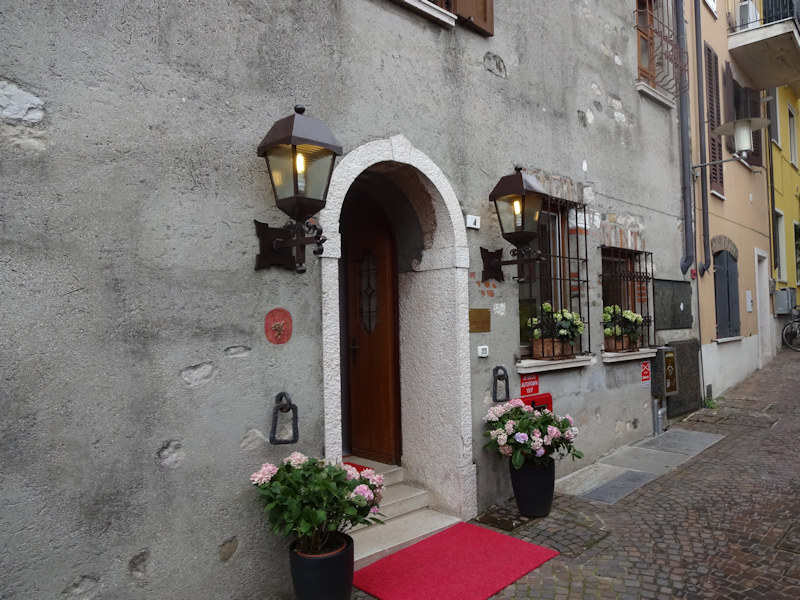
The hotel Grifone
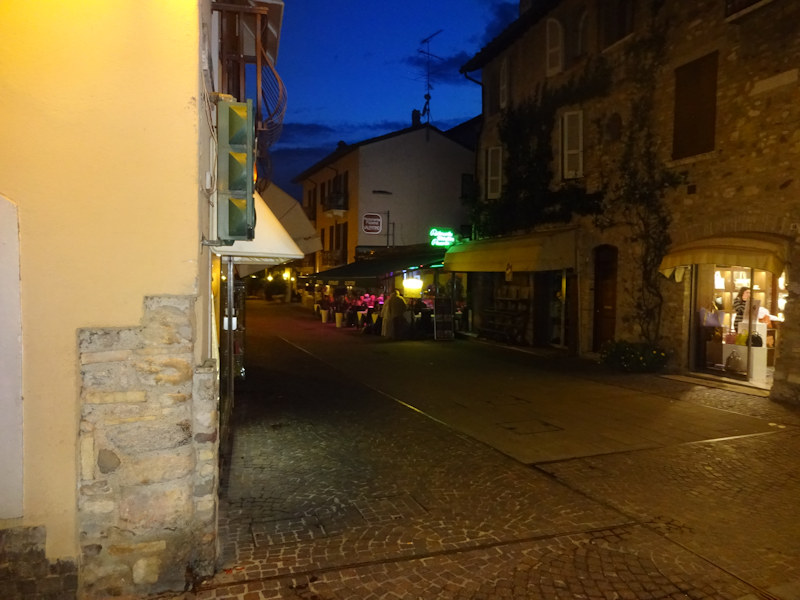
Dinnertime in Sirmione
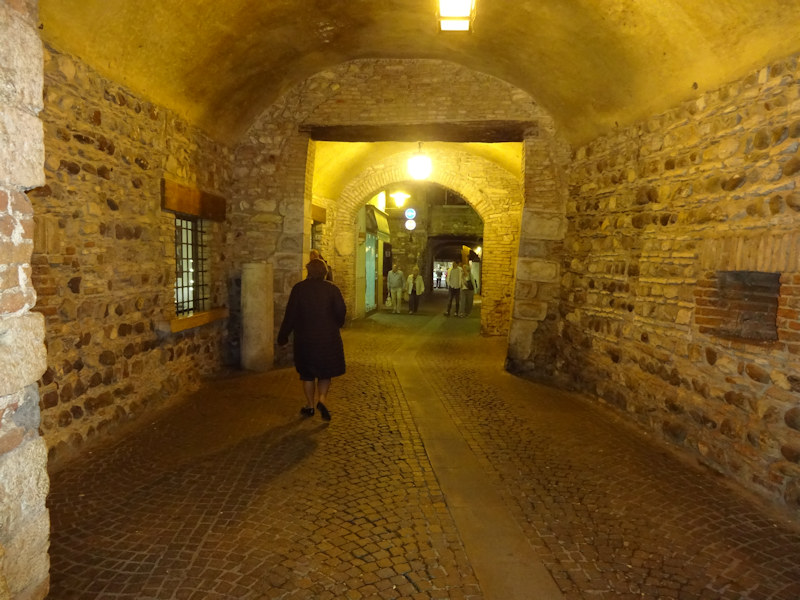
Postprandial stroll
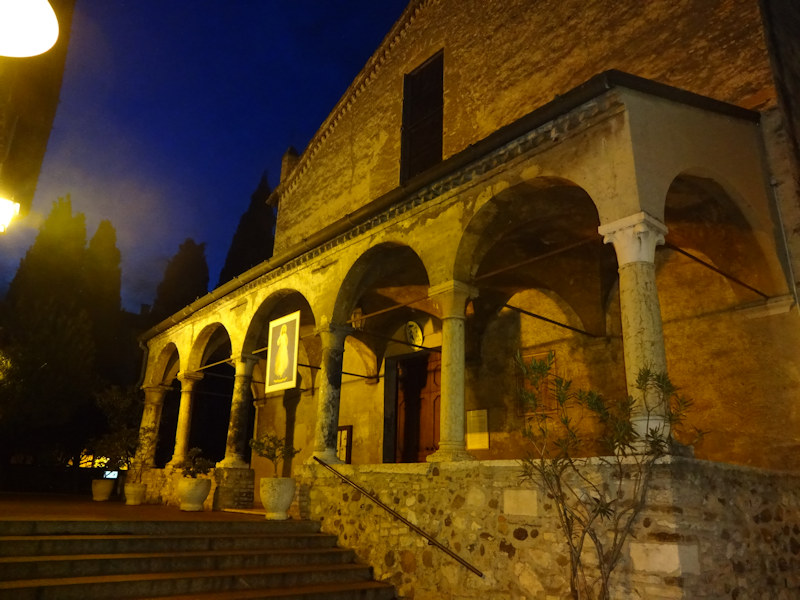
The front porch of Santa Maria Maggiore. Tomorrow -- a boat ride on the lake.
      
     
  

 Feedback
and suggestions are welcome if positive, resented if negative, Feedback
and suggestions are welcome if positive, resented if negative,  .
All rights reserved, all wrongs avenged. Posted 19 July 2016. .
All rights reserved, all wrongs avenged. Posted 19 July 2016.
|
 Dwight Peck's personal website
Dwight Peck's personal website





















































